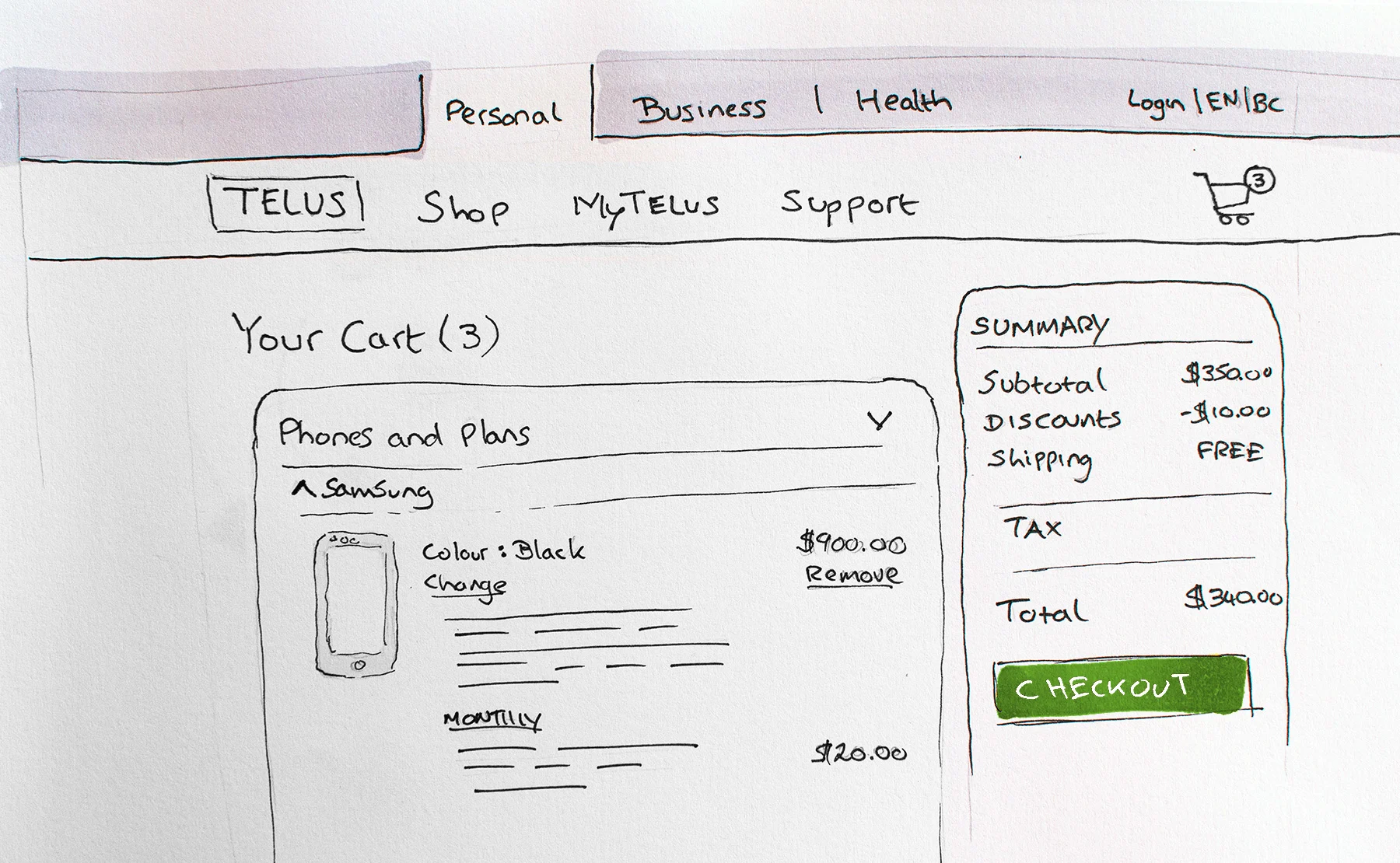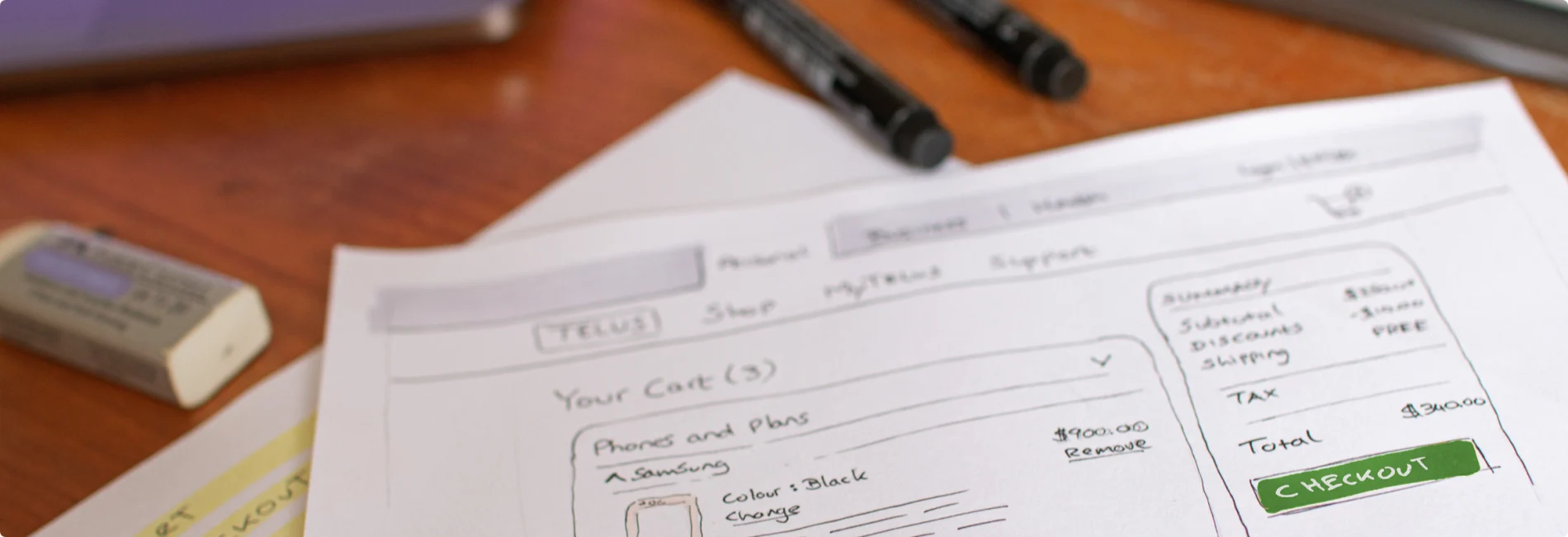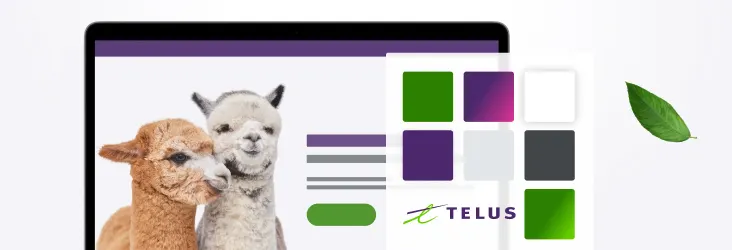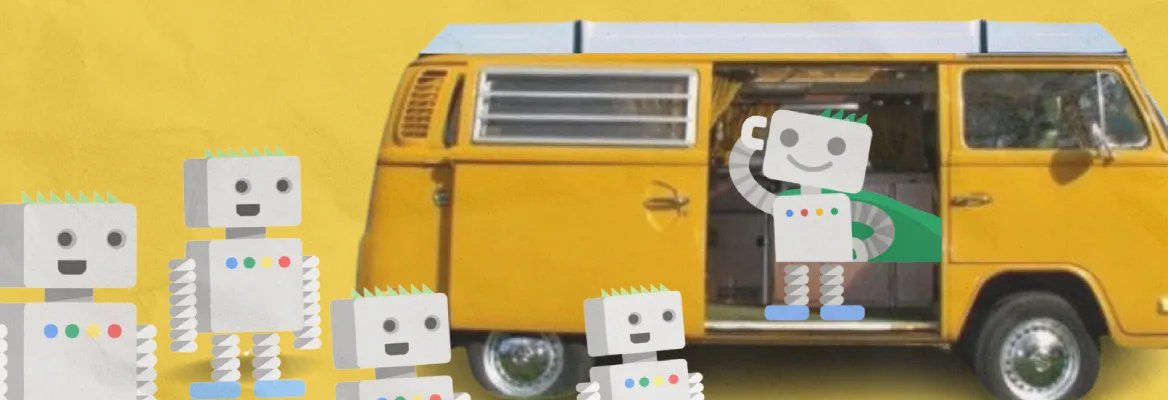Concept to Design in 3 Days - James Malone from NearForm
Content and Design · Oct 24, 2019
As a product designer, starting a new project brings a sense of excitement and trepidation. The excitement lies within the unknown and ironically in the trepidation is too. I work for a company called NearForm, who delivers software solutions for global clients like TELUS. Each client operates differently, has different values, cultures, ways of working, technology stacks and software. This allows for products and projects to be unique.
Before a project begins, I typically do some background research to piece together a view of how design is valued, different ways of working and technological stacks. The "Labs blog" was my first reference point for my TELUS research. The blog offers detailed information about how TELUS works and more importantly as a designer, how they value design. This is where I discovered the TELUS Design System (TDS).
As part of our workshop planning, I reached out to one of the TDS administrators to gain access to their design system. I received a friendly reply welcoming me on-board. This allowed me to familiarize myself with how TDS works, read the extensive documentation provided online and start to understand how existing products were designed for consistency.
Aligning the Pieces of the Puzzle
The process we follow for workshops at NearForm varies depending on the client's requirements. This particular TELUS workshop was a discovery workshop. They typically run for about three days with two additional days being completed remotely.
For a discovery workshop, the principal objective is to understand a specific problem, from the customer's and the end-users' perspective. As such, there is only so much preparation you can do without understanding the problem contextually.
I was comfortable using TDS and had created some basic wire frames to see how it all worked in Sketch. TDS uses InVision Design Manager and allows components to be simply dragged and dropped onto a Sketch art board. All of the components are well organized and well designed to allow them to scale and adapt.
I felt I had prepared as much as possible. The next step was a seven-hour flight from Dublin to Toronto.

The Discovery Workshop
At NearForm, we use a paring model for workshops, where a senior product designer is paired with a senior technical director. This relationship allows for a cross-functional approach to understanding what the main objectives of the project are, the pain points, KPI's and customers/end-user requirements. Each section of the workshop is driven by tangible outcomes, which helps to make sure the workshop makes steady progress over the three days.
During the workshop, the architecture, limitations, and scope of the project are identified with the technical team. The user journeys, customer interactions, known issues, and customer experience considerations are all discussed during the deep dive into what the project aims to achieve.
The TELUS project team are experts in understanding the project's goals, limitations, and customer pain points. The workshop becomes almost a race to transfer as much knowledge as possible.
Technical questions often spark design ideas which allows for openness to different opinions, approaches and views. During the first day, we deep dive into the problem. I’ll often be sketching in the background and noting down ideas and concepts. These are the core building blocks to forming an opinion into an eventual solution.
Stepping back to view the big picture
The first day is always the most intense. Once we finish at the TELUS offices, I sit down with the technical director and we chat informally about the day's events. I find it important to step back and simply understand what the bigger picture is. This is where being in the clients' offices becomes very useful.
Before going to bed and battling jet-lag, I tend to sketch out any ideas, thoughts or suggestions as it helps me rest and sleep better.
Finding the Time to Design
The second day is more technically focused. We align on what was discussed and I present some rough work concepts. If we have done our jobs right the alignment achieved on day one feeds into the designs. Agreement at this stage means I can jump into exploring some higher fidelity customer journeys.
This is where being prepared pays off. TDS has all the components, styles and branding I need to quickly prototype concepts. Accessibility and consistency are very important to TELUS. By using TDS my designs already meet the high accessibility standards and are brand-aligned. This means I can focus on solving the problems at hand and let TDS do the background heavy-lifting for me.
Context is an important part of product design. When the technical discussions are underway, I design and participate. Our approach to pairing design and tech allows for this tag-team style of interaction. As we are against the clock, this is a time-effective way of transferring knowledge and at the same time being productive.
Bringing it all Together
As the second day concludes we review the concepts presented and align on the direction to take. Being in the Toronto office offers the opportunity to collaborate with the TELUS designers and accessibility team. As a partner, we need to become part of the TELUS team and this collaboration helps with consistency and knowledge transfer.
Before the day concludes I add the designs to a prototype and use InVision to link these together. As with the first day, it's important to get alignment and with the technical director we go through the proposed solution to see can we improve or simplify it.
The final day is a mixture of validating the prototype with the TELUS team and making sure we have met their expectations. Any outstanding issues are discussed, unanswered questions are addressed and a plan for delivery is outlined.
Testing What you Don’t Know
As we fly back to Ireland, the work at TELUS continues. Testing and validating our assumptions is a key part of any project. Working with TELUS means we have the benefit of their dedicated user research department. Continuous testing is a strong part of TELUS and this allows us to test our prototype with real customers.
Conclusion
Any design system is only as strong as the people that support it. TELUS has a dedicated team behind this, who are supportive, enthusiastic and open to innovation. By engaging with the TDS team before the workshop and familiarizing myself with their approach, tools, and workflows I could focus on solving problems rather than designing interfaces.
Since our initial workshop, we’ve had the pleasure of contributing back to TDS. This feedback loop with partners is an important part of the TDS. A healthy design system is more than simply a way of consuming components and libraries, it's a way to feedback, improve and grow.



